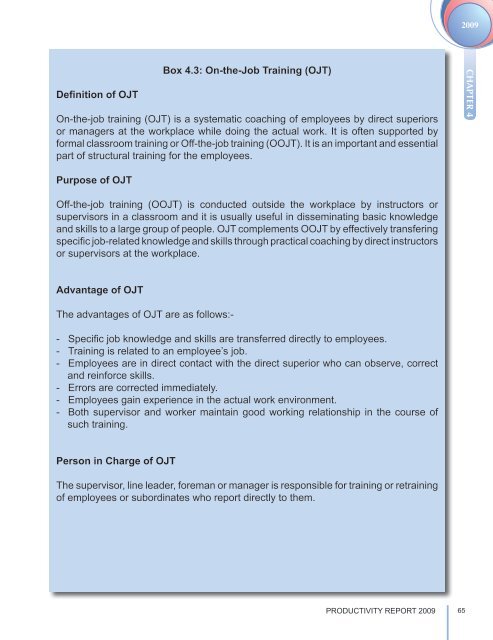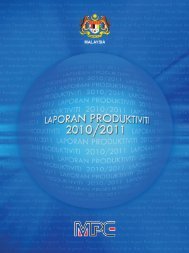Overview - MPC
Overview - MPC
Overview - MPC
You also want an ePaper? Increase the reach of your titles
YUMPU automatically turns print PDFs into web optimized ePapers that Google loves.
2009<br />
Definition of OJT<br />
Box 4.3: On-the-Job Training (OJT)<br />
On-the-job training (OJT) is a systematic coaching of employees by direct superiors<br />
or managers at the workplace while doing the actual work. It is often supported by<br />
formal classroom training or Off-the-job training (OOJT). It is an important and essential<br />
part of structural training for the employees.<br />
CHAPTER 4<br />
Purpose of OJT<br />
Off-the-job training (OOJT) is conducted outside the workplace by instructors or<br />
supervisors in a classroom and it is usually useful in disseminating basic knowledge<br />
and skills to a large group of people. OJT complements OOJT by effectively transfering<br />
specific job-related knowledge and skills through practical coaching by direct instructors<br />
or supervisors at the workplace.<br />
Advantage of OJT<br />
The advantages of OJT are as follows:-<br />
- Specific job knowledge and skills are transferred directly to employees.<br />
- Training is related to an employee’s job.<br />
- Employees are in direct contact with the direct superior who can observe, correct<br />
and reinforce skills.<br />
- Errors are corrected immediately.<br />
- Employees gain experience in the actual work environment.<br />
- Both supervisor and worker maintain good working relationship in the course of<br />
such training.<br />
Person in Charge of OJT<br />
The supervisor, line leader, foreman or manager is responsible for training or retraining<br />
of employees or subordinates who report directly to them.<br />
PRODUCTIVITY REPORT 2009 65
















